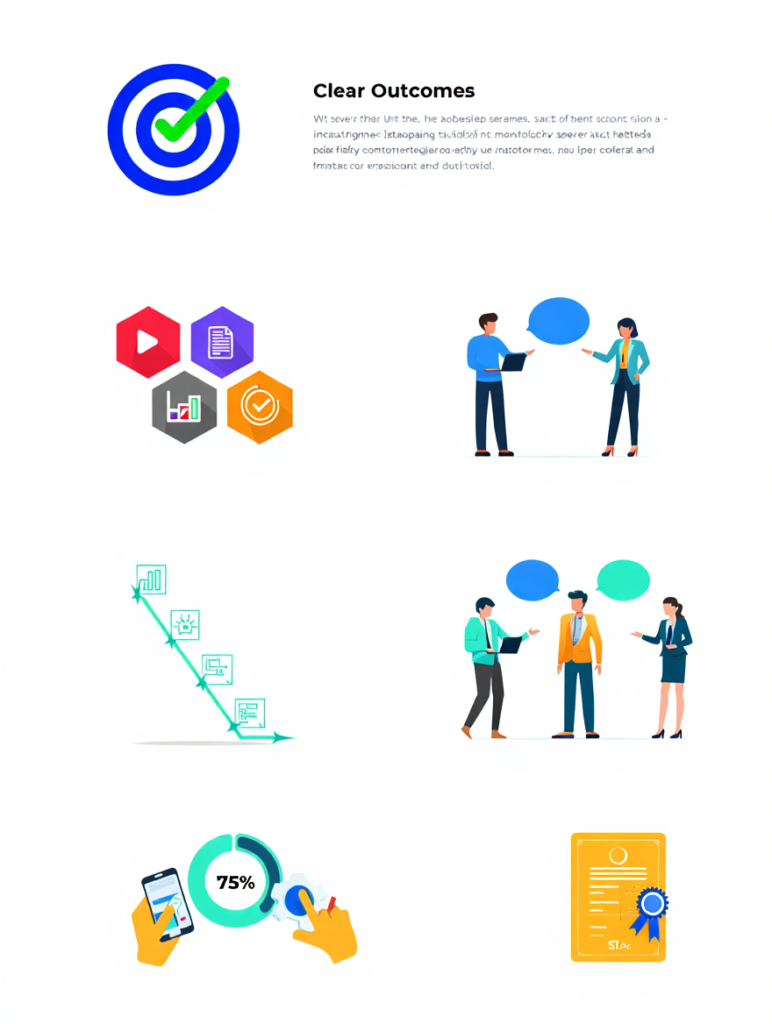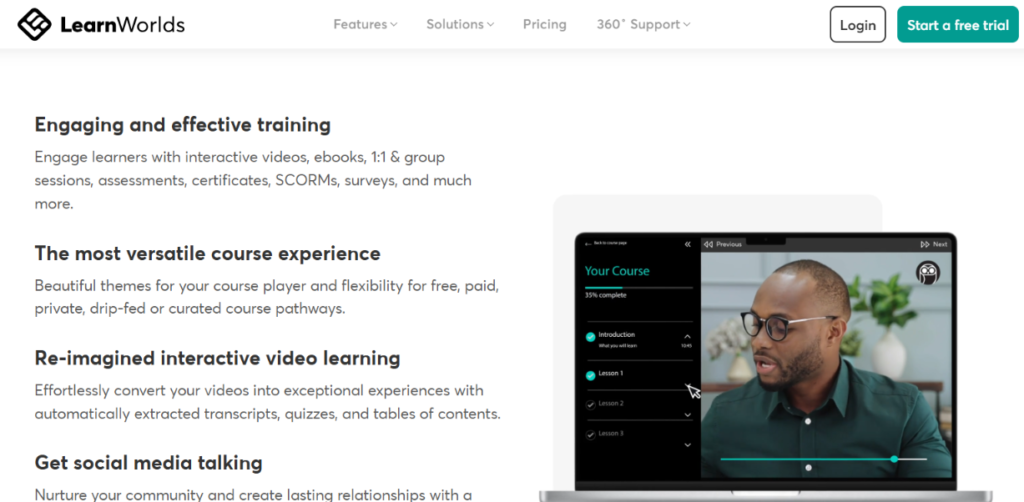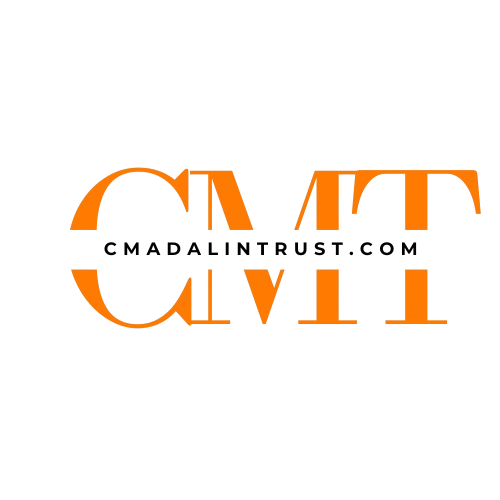Have you ever thought about the knowledge locked away in your brain that others would pay to learn? Perhaps you’re an expert baker who makes the perfect sourdough, a coding whiz who can build websites in your sleep, or a fitness enthusiast who’s mastered home workouts. Whatever your skill, there’s likely an audience eager to learn from you—and they’re willing to pay for it. Create your online course.
But how do you transform that expertise into an online course that generates income while helping others? Let’s dive in.
This article may contain affiliate links to tools I love and trust—if you choose to purchase through them, I may earn a small commission at no extra cost to you. Your support helps keep this blog running and full of free resources! 🔒✨
The Digital Education Revolution: Why Create an Online Course in 2025
The landscape of education has undergone a dramatic transformation. No longer confined to traditional classrooms, learning now happens anywhere, anytime—on smartphones during commutes, on tablets during lunch breaks, and on computers late into the night.

This shift has created unprecedented opportunities for experts in any field to share their knowledge and build sustainable income streams. Recent trends in online education show that the market is expanding, with more specialized courses gaining traction as learners seek specific skills rather than general knowledge.
The Story of Sarah: From Frustrated Teacher to Online Course Success
Sarah had been teaching high school mathematics for fifteen years when the pandemic hit. Suddenly thrust into remote teaching, she struggled initially but then discovered a talent for creating engaging digital math lessons.
“My students started telling me they understood concepts better through my online videos than they did in the classroom,” Sarah recalls. “One parent even asked if I offered private tutoring.”

That’s when the lightbulb went off. Sarah realized she could create courses that reached beyond her classroom—courses that helped students who struggled with traditional teaching methods.
She started small, creating a “Pre-Calculus Made Simple” course that she offered on a basic platform. Within six months, she had earned more from her course than three months of her teaching salary. A year later, she expanded to a full curriculum of math courses and was able to leave her teaching position to focus on her online education business full-time.
“The most rewarding part isn’t the income, though that’s nice,” Sarah says. “It’s the emails I get from students who finally understand concepts they’ve struggled with for years.”
Sarah’s story is not unique. Thousands of experts are finding success by creating online courses that share their specialized knowledge with eager learners worldwide.
What Makes a Successful Online Course? The Essential Ingredients
Before diving into the “how,” let’s clarify the “what.” A successful online course isn’t just a collection of videos or PDFs—it’s a transformational journey that takes students from point A (their current situation) to point B (their desired outcome).
Key Elements of Effective Online Courses:
- Clear, Specific Outcomes – Students should know exactly what they’ll be able to do after completing your course
- Engaging, Multimedia Content – Include videos, text, graphics, and interactive elements to cater to different learning styles
- Structured Progression – Break complex topics into manageable chunks that build logically on each other
- Community and Support – Provide ways for students to get help, connect with peers, and receive feedback
- Action-Oriented Assignments – Include practical exercises that reinforce learning and build confidence
- Progress Tracking – Help students see how far they’ve come and what’s next
- Certification or Completion Recognition – Offer something tangible that students can share to demonstrate their new skills

Have you identified which of these elements you’re most comfortable creating and which might require more effort? Understanding this can help you allocate your resources appropriately during course development.
How to Create Your Online Course: A Step-by-Step Blueprint
Now that you understand what makes a course successful, let’s break down the process of creating one:
1. Identify Your Course Topic and Target Audience
Your course should sit at the intersection of:
- Your expertise and passion
- Market demand
- A specific problem you can solve

Rather than creating a general “Photography Course,” consider “Smartphone Food Photography for Restaurant Owners” or “Wildlife Photography for Hiking Enthusiasts.”
2. Research and Validate Your Course Idea
Before investing significant time and resources, ensure there’s demand for your course:
- Search for related courses on platforms like Udemy or Coursera
- Join online communities where your target audience gathers
- Create a simple landing page to gauge interest
- Survey potential students about their specific challenges
- Offer a free mini-workshop on the topic and analyze engagement
3. Create Your Course Outline and Content Plan
Break your course into modules and lessons:
- Start with the end goal and work backward
- Organize content from fundamental to advanced concepts
- Plan for different content types (videos, readings, quizzes, assignments)
- Identify points where students might struggle and plan additional support

4. Choose Your Course Platform
Selecting the right platform is crucial for course delivery. Many beginners find LearnWorlds an excellent all-in-one solution that offers course building, hosting, selling, and community features. For a comprehensive breakdown of its features, check out this detailed LearnWorlds guide.
Another powerful option is Kajabi, which provides a robust all-in-one platform combining course creation, marketing automation, website building, and sales funnels. Kajabi excels for creators who want sophisticated marketing tools integrated directly with their course platform.
Other popular options include:
- Teachable
- Thinkific
- WordPress with LMS plugins
- Circle (for community-focused courses)
5. Create Engaging Course Content
Quality content is the heart of your course:
For Video Content:
- Invest in decent lighting and audio (more important than expensive cameras)
- Keep videos concise (5-15 minutes) and focused on a single concept
- Include on-screen text to reinforce key points
- Consider using Synthesia AI video generator to create professional videos without appearing on camera yourself
Written Content:
- Use clear, conversational language
- Include visuals to break up text
- Format for readability (bullet points, headers, short paragraphs)
Interactive Elements:
- Create quizzes that reinforce key concepts
- Design assignments that apply learning to real situations
- Develop workbooks or templates that students can use
6. Set Up Your Sales and Marketing System
Even the best course won’t sell itself:
- Create a compelling sales page that focuses on transformation, not features
- Develop a lead magnet to attract potential students
- Establish an email sequence to nurture leads
- Consider offering a limited-time discount for your launch
- Gather testimonials from beta testers or initial students
- Plan a content marketing strategy to drive organic traffic
7. Launch, Gather Feedback, and Iterate
Your first course version doesn’t need to be perfect:
- Consider a beta launch at a reduced price for initial feedback
- Actively solicit feedback throughout the course experience
- Monitor completion rates and identify dropout points
- Make improvements based on student experiences
- Continue adding value through updates and additional resources
Where to Host and Sell Your Online Course: Platform Options for Every Creator
The platform you choose can significantly impact your student experience and your bottom line. Here are options for different creator needs:
Beginners with Limited Tech Skills:
- LearnWorlds: User-friendly with comprehensive features
- Teachable: Simple interface with straightforward pricing
- Udemy: Easy to upload courses, but less control over pricing and marketing

Creators Who Need Marketing Power:
- Kajabi: Built-in marketing tools and sales funnels
- Podia: Email marketing and webinar capabilities included
- Thinkific: Robust marketing integrations and affiliate programs
Maximum Flexibility and Control:
- WordPress with LMS plugins: Complete customization, but requires technical knowledge
- Custom-built platform: Unlimited options, but the highest investment
- Hybrid approach: Core content on a dedicated platform with community on Circle or Discord
Why Create an Online Course? The Benefits Beyond Income
While earning potential is often what draws people to course creation, the benefits extend far beyond money:

Personal Benefits:
- Forces you to deepen and systematize your own knowledge
- Establishes you as an authority in your field
- Creates assets that generate income while you sleep
- Opens doors to speaking engagements, consulting, and other opportunities
Impact Benefits:
- Helps people who might never have access to your expertise otherwise
- Scales your teaching beyond one-to-one constraints
- Creates a community of like-minded learners
- Provides flexible learning options for those with non-traditional schedules
FAQ: Common Questions About Creating Online Courses
Q: How much money can I really make with an online course?
A: Income varies widely based on niche, audience size, pricing, and marketing efforts. Some creators earn a few hundred dollars monthly, while others generate six or seven figures annually. The key is to focus first on solving a specific problem for a defined audience rather than on potential earnings.
Q: Do I need expensive equipment to create course videos?
A: No. While quality matters, content value trumps production value, especially when starting. A smartphone with good lighting and clear audio will suffice for beginners. Alternatively, tools like Synthesia allow you to create professional AI-generated videos without appearing on camera.
Q: How do I price my course?
A: Price based on the transformation you provide, not the number of videos or length of content. Research competitors, but don’t automatically undercut them. Consider your target audience’s purchasing power and the specific problem you’re solving. Testing different price points can help identify the optimal balance between conversion rate and revenue.
Q: What if I’m not a natural teacher?
A: Teaching is a skill that improves with practice. Start by focusing on clear explanations of concepts you know well. Use examples and analogies to illustrate points. Remember that your unique perspective and approach may be exactly what helps certain students understand concepts they’ve struggled with previously.
Q: Is the online course market saturated?
A: While there are many courses available, specific niches still have plenty of opportunities. The key is specialization—offer something unique, target a specific audience, or take a fresh approach to teaching a subject. Remember: new generations of learners are constantly entering the market, and problems evolve, creating ongoing demand for updated solutions.
Start Your Online Course Journey Today
Creating an online course is more accessible than ever before, but it still requires commitment, planning, and a genuine desire to help others learn. The most successful course creators focus on student transformation rather than flashy features or marketing gimmicks.
What expertise could you package into a course that would genuinely help others? See problems do people regularly ask you to help solve? What knowledge do you have that others would value enough to pay for?
The answers to these questions could be the foundation of your successful online course business.
Ready to transform your knowledge into an income-generating course but feeling overwhelmed by the technical aspects or marketing strategy? The team at CMadalinTrust.com specializes in helping experts navigate the course creation journey—from concept development to platform selection to launch strategies. Reach out today for a free consultation to discuss how we can help bring your course idea to life and connect you with the students who need your expertise.
Your knowledge is valuable. Isn’t it time you shared it with the world—and got paid for doing so?


[…] For a detailed walkthrough of this process, check out this comprehensive guide to creating your online course. […]